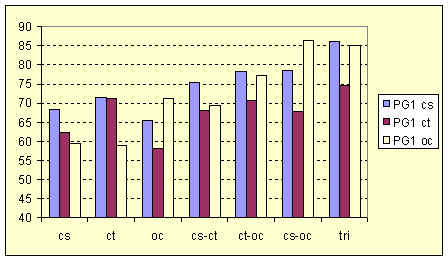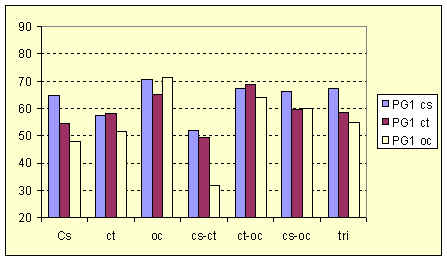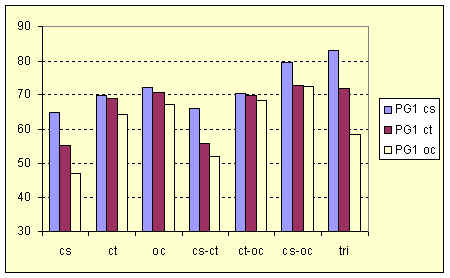
| SociolingŘÝstica catalana |
| Trilingual education in the Vall d’Aran. An analysis in terms of linguistic interdependence, by Jordi Su´ls SubirÓ, └ngel Huguet CanalÝs and Xavier Lamuela Garcia | ||||
| CONTINUA |
The DLC component was clearly much more closely related to differences in competence in all three languages, but particularly in Catalan and Occitan, and even more clearly in the Intermediate and Upper Cycles (figures 2 and 3). Generally speaking, the Intermediate and Upper Cycles reveal that groups in which Occitan forms part of the DLC obtain higher marks for all three languages. In addition, monolinguals in Spanish and bilinguals in Catalan-Spanish obtain lower marks in Catalan and Occitan with only Spanish benefiting, although they do not obtain very high marks in any language. These differences are particularly marked in the Upper Cycle: the two DLC groups obtain not particularly high marks in PG1 Spanish, and very low marks in Catalan and Occitan. Figure 1. PG1 averages according to DLC groups. Initial Cycle
|


